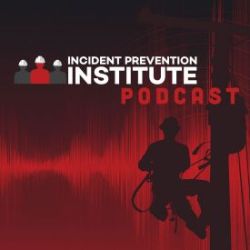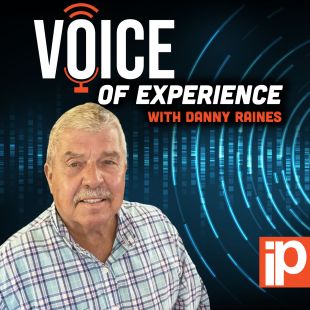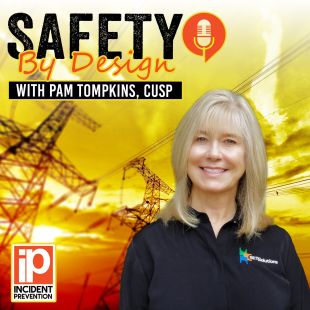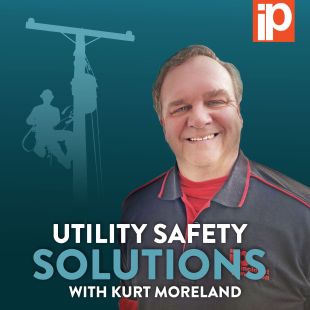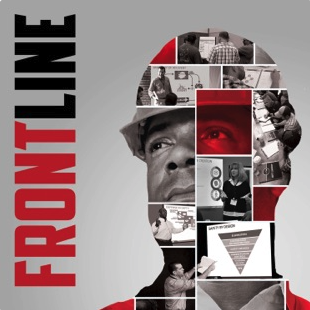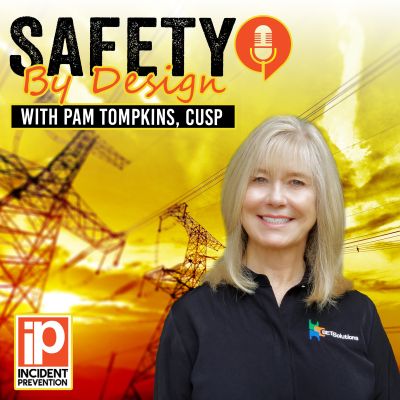
Safety by Design Podcast – Pam Tompkins, CUSP
Pam Tompkins, CUSP, CSP, is president and CEO of SET Solutions LLC. She is a 40-year veteran of the electric utility industry, a founding member of the Utility Safety & Ops Leadership Network and past chair of the USOLN executive board. Tompkins worked in the utility industry for over 20 years and has provided electric power safety consulting for the last 20-plus years. An OSHA-authorized instructor, she has supported utilities, contractors and other organizations operating electric power systems in designing and maintaining safety improvement methods and strategies for organizational excellence.
PODCASTS BY INTERVIEWER
Safety By Design Podcasts
Safety by Design – Human and Organizational Performance with Pam Tompkins CSP, CUSP
Read the article – https://incident-prevention.com/blog/safety-by-design-human-and-organizational-performance/
In this installment of the Safety by Design podcast series, host Nick sits down with Pam Tompkins, President and CEO of SET Solutions, to explore the transformative philosophy of Human and Organizational Performance (HOP). Based on her latest article in Incident Prevention magazine, Pam breaks down why traditional, compliance-based safety programs often fall short in high-risk utility environments.
Listeners will discover how shifting from a “blame culture” to a “learning culture” can drastically improve safety outcomes. Pam details the five core principles of HOP, offering actionable advice on how to identify predictable “error traps,” why context matters in human decision-making, and how leadership’s response to failure defines an organization’s future. Whether you are a frontline leader or a safety executive, this episode provides the blueprint for building a resilient system that protects employees even when mistakes happen.
Keywords: Safety by Design, Human and Organizational Performance, HOP Principles, Utility Safety, Safety Culture, Pam Tompkins, Incident Prevention, Error Traps, Operational Learning.
Key Takeaways
- The “Blame” Trap vs. System Design: Traditional safety often assumes employees should be perfect 100% of the time. HOP accepts that people will make mistakes and focuses on fixing the systems (procedures, equipment, pressures) that support them, rather than trying to “fix” the people.
- The 5 Principles of HOP: The episode outlines five foundational principles:
- People will make mistakes.
- Error-likely situations are predictable.
- All human actions are influenced by context.
- Operational upsets can be avoided.
- How we respond to failure matters.
- Identifying Error Traps: Many incidents are preceded by “error traps”—predictable conditions like fatigue (working 16+ hours), unfamiliar tasks (e.g., a mobile sub not used in a year), or unclear switching orders. Identifying these early prevents errors from becoming accidents.
- The Critical Role of Leadership Response: A leader’s reaction to a failure determines if an organization learns or hides. Asking “Who messed up?” creates fear, while asking “What conditions led to this?” builds trust and encourages the reporting of near-misses.
- Learning From Daily Work: You don’t have to wait for a major accident to learn. Simple habits, like a two-minute “after-action review” at the tailgate or informal learning teams, can uncover operational gaps before they cause harm.
Questions & Answers
Q1: What is the biggest misconception about adopting Human and Organizational Performance (HOP) in the workplace? A: The biggest misconception is that HOP ignores accountability. In reality, HOP shifts accountability from “who is to blame” to “how do we fix the system.” It acknowledges that while individuals are responsible for their actions, they often work within flawed systems that set them up for failure. As Pam Tompkins explains, you cannot fix a human being, but you can fix the pressures, tools, and procedures that influence their decisions.
Q2: What are some practical examples of “error traps” that utility crews face? A: “Error traps” are specific conditions that increase the probability of a mistake. Common examples discussed in the podcast include:
- Fatigue: Crews working long shifts during storm restoration.
- Infrequent Tasks: Performing a job or using equipment (like a mobile substation) that hasn’t been touched in months.
- Poor Documentation: Switching orders that bundle multiple critical tasks into a single step without checks and balances.
- Production Pressure: Implicit or explicit messages from management prioritizing speed over safety protocols.
Q3: How can a team start implementing HOP principles tomorrow without a massive administrative overhaul? A: Implementation can start with a simple question. Pam suggests that frontline leaders ask their crews daily: “What part of your job is most likely to hurt someone today, and what gets in the way of doing it safely?” Additionally, shifting the post-incident conversation from discipline to curiosity—asking “Walk me through what happened” instead of “Why didn’t you follow the rule?”—immediately begins to build the trust necessary for a HOP culture.
#SafetyByDesign #UtilitySafety #SafetyManagementSystem #ProactiveSafety #LeadingIndicators #WorkplaceSafety #SafetyCulture
OSHA Power Electric Standards Course – https://ip-institute.com/osha-electric-power-standards/
Subscribe to Incident Prevention Magazine – https://incident-prevention.com/subscribe-now/
Register for the iP Utility Safety Conference & Expo – https://utilitysafetyconference.com/
Utility Safety Podcast – Safety by Design – Safety Management System Planning with Pam Tompkins CSP, CUSP
In this episode of the Safety by Design, Nick sits down with Pam Tompkins, CUSP to discuss her recent article, “Safety by Design, Safety Management System Planning.” This is the third installment of a six-part series where Pam delves into the critical role of planning in creating an effective safety management system (SMS). Pam explains why a proactive, systemic approach is essential for identifying and mitigating workplace hazards, moving beyond a reactive safety model. She emphasizes the importance of conducting a gap analysis to understand the current state of safety, using a systems-thinking approach to risk management, and setting clear, measurable objectives. The discussion also covers the use of leading indicators and key performance indicators (KPIs) to track progress and ensure continuous improvement, all within the framework of the ANSI/ASSP Z10-2019 standard.
Key Takeaways:
- A proactive “safety by design” approach is crucial to move beyond a reactive safety culture that waits for accidents to happen.
- Conducting a gap analysis is an essential first step to identify weaknesses in your current safety practices and align improvements with fieldwork.
- Leading indicators, such as safety observations and near-miss reporting, provide a more accurate picture of safety performance than lagging indicators like incident rates.
- A systems-thinking approach helps to understand how people, processes, and equipment interact, leading to more effective risk management.
- Setting SMART (Specific, Measurable, Achievable, Relevant, and Time-bound) objectives is key to making safety goals actionable and accountable.
- The ANSI/ASSP Z10-2019 standard provides a comprehensive framework for building and maintaining a robust safety management system.
- Engaging employees at all levels in the safety planning process is vital for building a strong safety culture and ensuring that procedures are practical and effective.
Q&A:
Q: What is the main problem with a reactive approach to safety? A: A reactive approach to safety is insufficient because it waits for accidents to happen before taking action. In high-risk industries like electric power, the consequences of an incident can be catastrophic, making it too late to react after a fatality or serious injury has occurred.
Q: Can you provide an example of an effective leading indicator? A: One effective leading indicator is near-miss reporting. A high level of participation in near-miss reporting is a positive sign that employees are engaged in the safety process and feel comfortable speaking up about potential hazards. This allows organizations to address issues before they lead to an incident.
Q: What is “systems thinking” in the context of safety? A: Systems thinking is about looking at the bigger picture and recognizing that safety is influenced by the interaction of people, processes, and equipment. Instead of blaming an individual for a mistake, a systems-thinking approach looks for flaws in the system that may have contributed to the error, such as impractical procedures or a lack of resources.
#SafetyByDesign #UtilitySafety #SafetyManagementSystem #ProactiveSafety #LeadingIndicators #WorkplaceSafety #SafetyCulture
OSHA Power Electric Standards Course – https://ip-institute.com/osha-electric-power-standards/
Subscribe to Incident Prevention Magazine – https://incident-prevention.com/subscribe-now/
Register for the iP Utility Safety Conference & Expo – https://utilitysafetyconference.com/
Safety by Design – Empowering Leadership and Employee Involvement with Pam Tompkins CSP, CUSP
Safety by Design – Empowering Leadership and Employee Involvement with Pam Tompkins CSP, CUSP
Read the article – https://incident-prevention.com/blog/safety-by-design-leadership-and-employee-involvement/
In this episode of Safety by Design, we welcome back safety expert Pam Tompkins, CUSP, CSP, to explore the foundational role of leadership and employee involvement in building effective safety systems. Based on her recent article in Incident Prevention magazine, Pam shares candid insights on overcoming middle management roadblocks, building measurable KPIs, and empowering workers at all levels—from new apprentices to seasoned frontline leaders. Tune in as Pam breaks down why involving the workforce is not optional but essential to safety success—and how organizations can align top-down and bottom-up strategies to protect their people and drive meaningful change.
Key Takeaways:
-
People are the foundation of safety—rules and programs only work when employees are actively involved in shaping and executing them.
-
Middle management is often the bottleneck in safety performance due to lack of field experience and misaligned priorities.
-
Effective safety systems require alignment across all levels: senior leaders, middle managers, and frontline employees.
-
KPIs must be tailored by role—senior leadership, middle management, and field crews should each have performance metrics tied to their unique influence on safety.
-
Safety is not just policy—it’s integration, and organizations must continuously measure, evaluate, and adapt their systems with employee feedback.
❓ 5 Relevant Questions & Answers:
Q1: Why is employee involvement essential to a successful safety system?
A1: Without employees, there is no safety system. Engagement ensures processes are practical, understood, and effectively integrated into real-world tasks.
Q2: What role does middle management play in the success—or failure—of safety programs?
A2: Middle managers often act as a roadblock if they prioritize production over safety or lack a true understanding of field-level risks.
Q3: How can senior leaders improve safety outcomes?
A3: By understanding the real “look of safety,” engaging directly with field teams, and holding themselves accountable for organizational risk tolerance.
Q4: What kind of KPIs are most effective for evaluating safety?
A4: Role-specific KPIs—like field engagement for executives or measurable improvements in hazard mitigation for frontline supervisors—are key.
Q5: What’s the danger of not aligning top-down and bottom-up safety efforts?
A5: It creates a culture of distrust, disengagement, and missed opportunities to improve safety. Full integration is necessary for success.
#UtilitySafety #WorkplaceSafety #SafetyLeadership #SafetyCulture #EmployeeEngagement #FrontlineSafety
Subscribe to Incident Prevention Magazine – https://incident-prevention.com/subscribe-now/
Register for the iP Utility Safety Conference & Expo – https://utilitysafetyconference.com/
Safety by Design: Transforming Utility Safety with Pam Tompkins, CUSP
In this episode of the Safety by Design podcast, Pam Tompkins, CUSP, shares her extensive 40-year journey in the utility safety industry. Pam dives into the critical importance of intentional safety planning and proactive assessments, emphasizing the need for quality over quantity in safety initiatives. With insights drawn from her global consulting experience, Pam provides actionable strategies to design systems that protect both employees and organizations. She also previews her upcoming article series in Incident Prevention Magazine, which will provide a deep dive into transforming safety practices for utility professionals.
Key Takeaways
- Proactive Assessments are Vital: Most safety assessments are reactive, conducted after incidents occur. Pam stresses the need for proactive assessments to prevent significant injuries or fatalities.
- Quality Over Quantity: Simply adding more safety initiatives doesn’t translate to better safety outcomes. Organizations must ensure their programs are effective and aligned.
- Importance of Standards: Leveraging ANSI and ISO standards can guide organizations in creating robust safety systems.
- Systemic Alignment Matters: Safety programs should align at all organizational levels to ensure effectiveness and consistency.
- Baseline and Metrics: Establishing a baseline and measurable goals for every safety initiative is essential for tracking success.
#SafetyByDesign #UtilitySafety #ProactiveSafety #CUSPLeadership #IncidentPrevention #WorkplaceSafety
You can read the current magazine at Incident Prevention Magazine.
Subscribe to Incident Prevention Magazine – https://incident-prevention.com/subscribe-now/
Register for the iP Utility Safety Conference & Expo – https://utilitysafetyconference.com
Do you have insight to share with the utility safety community?
Contact us with your podcast topic and 2-3 learning objectives to be considered for our next podcast episode.
